It seems that many people do not take electricity and the associated hazards seriously enough. As the use of this great power has expanded into everyone’s daily life, electrical safety in the home and workplace is expected and taken for granted. People have come to expect electricity to work without interruption and have taken comfort in the technology and protective devices that make our life easier and safe.

Photo 1. Long before the dwelling or business is occupied by the public, electrical workers and others involved in its construction are expected to install electrical circuits and systems that are safe and in compliance with the minimum provisions
Knowledge plays an important role in electrical safety
Many working in the electrical industry are concerned with and dedicated to safe electrical system design, installation, and use. Each spring the industry places increased emphasis on electrical safety. Many electrical safety forums and symposiums are offered, electrical contractors hold regular safety meetings on the construction projects, and consumers are alerted to the hazards of electricity through many reminders about frayed electrical cords, using correct lamp wattages in luminaries (lighting fixtures), testing GFCI operation monthly, and numerous other safe practices with the use of electricity. Electrical safety is no accident and should not be taken for granted whatever the connection one has to it.
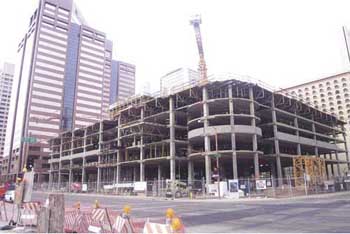
Photo 2. Long before the dwelling or business is occupied by the public, electrical workers and others involved in its construction are expected to install electrical circuits and systems that are safe and in compliance with the minimum provisions of the
Long before the dwelling or business is occupied by the public, electrical workers and others involved in its construction are expected to install electrical circuits and systems that are safe and in compliance with the minimum provisions of the applicable codes (see photos 1 and 2). The consumer demands this and is entitled to it. Let’s face it, many consumers have little knowledge of how electricity gets to the outlets, they just expect it always to be there and work properly and safely. Safety of persons and property is the primary purpose of the NEC as clearly indicated in the first rule. Keeping buildings safe from fire and electrical hazards depends on quality electrical installations by qualified persons. Fire safety for a building depends greatly on how safe the electrical system of the building is. This is one of the key roles of the electrical inspector and thus emphasizes the importance of the electrical inspector relative to electrical safety.
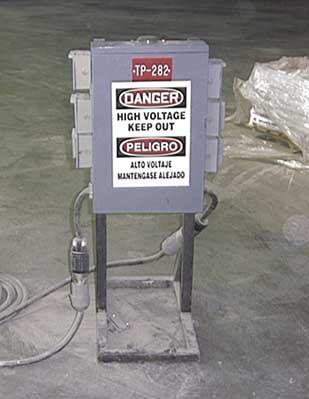
Photo 3. Temporary electrical installations must be safe. Electrical power does not discriminate between temporary and permanent installations, the hazards are the same
Many place emphasis on safe use of electricity by the consumer and public in general, and it is important to remind consumers of the dynamics of electrical systems and new safety features and technologies that make their world safer. Respect for electricity is often gained during the early years in one’s life. Chances are, many who are reading this article have received an electrical shock at some point during their life. If they were not seriously injured and are here to discuss it today, they often laugh slightly, or chuckle with a bit of hesitation, because they understand the significance of that event and how they gained a new level of respect for this awesome force.
Hazards of temporary construction lighting and power
Too often electrical safety for the occupant and consumer is well publicized but not enough emphasis is placed on the safety of electrical installers in the field. As electricians work diligently to install a building’s electrical system, they are often surrounded by the hazards of temporary construction lighting and power. Temporary power and lighting for construction sites and other situations are not “anything goes” situations. Temporary electrical installations must be safe. Electrical power does not discriminate between temporary and permanent installations, the hazards are the same (see photo 3). Many electrical injuries and some deaths have resulted from electrical accidents related to temporary power installations. Article 527 of the Code includes the minimum provisions for temporary electrical installations.
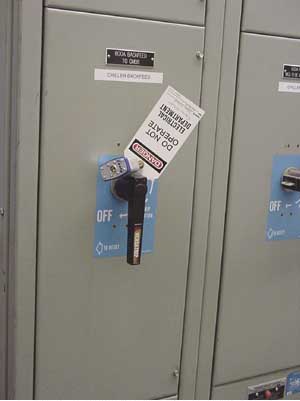
Photo 4. Follow all applicable locking and tagging rules
Electrical workers must understand the rules that serve to provide electrical power and lighting that is essentially safe at the site during the time of construction. The electrical worker is expected to carry the required knowledge, mechanical abilities, and safe work practices to work day in and day out. Working in the electrical field involves an understanding of electrical installations from rough wiring to finished electrical systems that are energized. When electrical systems are nearing completion and the construction activities begin to wind down, electrical safety concerns become more diverse. Not only does the electrician have to contend with installation of the final circuits and systems, but also, in many cases, energized equipment is involved. Safety rules become more extensive when live equipment is in the mix. Safe electrical work practices and the OSHA rules have increased impact and application. The electrical worker must understand the dos and don’ts and the risks involved in working energized equipment. It is worth a reminder here that the basic safety principles for electrical safety for the worker are to work only on electrical circuits and equipment while the power is off. While working on equipment that is off, the supply feeder disconnecting means should be locked in the open position for safety. Follow all applicable locking and tagging rules (see photo 4).
Identifying a qualified person
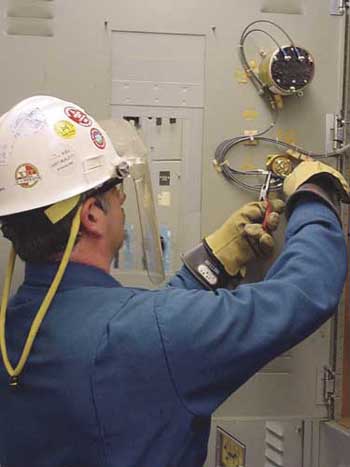
Photo 5. Suitable personnel protective equipment (PPE) is required for protection when equipment must be worked on while it is energized.
A “qualified person” is defined in the Code as “One who has skills and knowledge related to the construction and operation of the electrical equipment and installations and has received safety training on the hazards involved.”1 This definition can be broken down into three basic components. First, it indicates that the qualified person is familiar with electrical equipment operation and the construction of electrical installations. Second, the qualified person has specific skills and knowledge regarding these operations and installations. Third, qualified persons are also expected to have received applicable safety training about the hazards involved with electrical system construction and installation and electrical equipment operation and use. This definition was revised in the 2002 NEC cycle to become more restrictive and specific. Electrical workplace safety is apparent in the 2002 NEC through additional rules in Section 110. Although these rules are not new to the electrical industry, they are a new addition to the 2002 NEC. The requirements included in Section 110.16 draws attention to the hazards of arc flash when working on energized equipment. Although general in nature, the subtle message is followed by some extremely important fine print notes that direct code users to other safety standards that include specific electrical worker safety requirements.
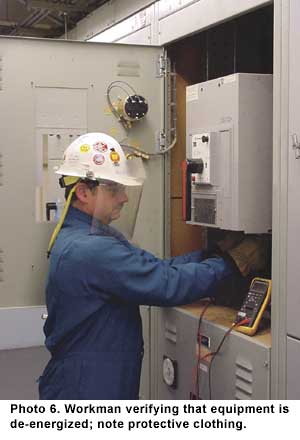
Photo 6. Removing covers from live panelboards or service equipment to make inspections should not be done unless the equipment is first disconnected from the source and then verified that it is de-energized
The base requirement set forth by OSHA relative to electrical industry workers is that electrical equipment not be worked on while it is energized. Compliance with this law provides reasonable assurances that the hazards of electrical shock and electrocution have been removed from the equation. When equipment is worked on while it is energized under extreme and “”demonstrated reasons,”” the hazards of arc flash and arc blast are present. The risk of severe injury and possibly death is dramatically increased. Only extreme conditions or circumstances should result in a mandatory condition to work on energized equipment. (OSHA refers to these situations as “”demonstratable reasons”” to have to work on live equipment.) Suitable personnel protective equipment (PPE) is required for protection when equipment must be worked on while it is energized (see photo 5).
Electrical inspectors have a work place also
This portion of the article focuses on the workplace of the inspector. As buildings are being inspected in the first stages of construction, the inspector is rarely exposed to energized equipment. Projects that are approaching the final stages of construction usually include equipment and circuits that are energized. Many jurisdictions have regulations that require an approval or acceptance by the inspector prior to turning equipment or circuits on. Many areas do not have this type of regulation. Once the electrical service is cleared for power, the potential for exposure to energized equipment is increased. Inspectors should also incorporate the same work practices that electrical workers do relative to exposure to live parts. The OSHA rules are the same for both the inspector and the worker. Neither should work on equipment while it is energized nor expose himself to possible electrical injuries. Removing covers from live panelboards or service equipment to make inspections should not be done unless the equipment is first disconnected from the source and then verified that it is de-energized (see photo 6).
This is not the job of the inspector. It is generally the responsibility of the contractor/owner to provide safe access to the equipment for the inspector to do his or her job. It is probably not far off base to point out that many risk management departments of the organizations that employ electrical inspectors have little awareness of what the inspector does from day to day. It shouldn’t take an electrical flash or blast injury before important questions about risks involved are asked. A significant part of individual electrical safety for the qualified installer and inspector is to understand the hazards involved. This knowledge is gained through regular continuing education courses and training. If one understands the hazards involved and the laws and regulations that apply, it is easier to achieve an electrically safe environment for both to perform their jobs safely. Sounds like the definition of a qualified person doesn’t it?
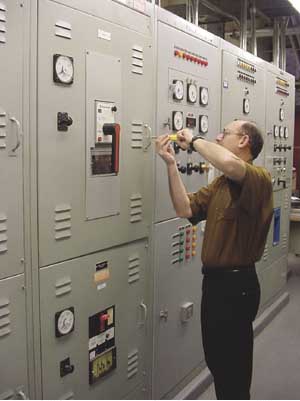
Photo 7
Section 110.16 includes a requirement for labels that warn qualified persons of potential arc-flash hazards if equipment is worked on while it is energized. The warning label must be clearly visible to qualified persons before they begin working on the equipment. (Notice that the term “”qualified person”” appears twice in this section.) This means one would have to ignore the warning label and go around it by removing the cover to expose themselves to the hazards. It is rather interesting that some jurisdictions are working so diligently to get all the labels installed on this equipment during the course of construction, but then to make a final inspection, the inspector takes an it-won’t-happen-to-me attitude and goes around the label to remove the cover to complete the inspection (see photos 7 and 8). Does this scenario sound familiar to you?
Think carefully about it for a moment, inspectors have a workplace too, and often they are exposing themselves to the same hazards that the installers are exposed to when working on energized equipment. I recall an article written by former IAEI Executive Director Phil Cox titled, “”I Thought It Was Dead.”” In that article Phil emphasized the importance of training, knowledge, and testing equipment to verify equipment is off before working on it. The key message Phil was trying to relay to the readers revolved around electrical safety for the worker. Many in the industry have a lot of pride, and they should. It is a noble profession and requires a great deal of knowledge and effort to become qualified. Being qualified in the electrical field means one knows and understands the methods of installation and how equipment works, but also understands the risks and hazards involved. Being qualified also means that one understands the right questions to ask when risks and electrical safety are involved.
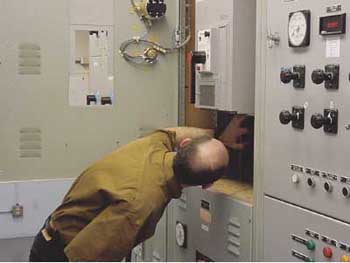
Photo 8
There are few times when, because of extenuating circumstances and demonstrated reasons, working equipment while it is energized is determined to be the method of choice. These decisions should be made cautiously and all consequences carefully considered. In such cases, the worker should be qualified, and also should be protected with the appropriate personal protective equipment that will afford a reasonable degree of protection in the unfortunate event of an accident. Electrical inspectors that might need to inspect during these types of operations would require the same level of personal protective equipment. Wearing the protective equipment does not mean one would not be injured as a result of a blast or arc flash event, it only improves the chances that one might receive burns or injuries that are curable (see photo 9).
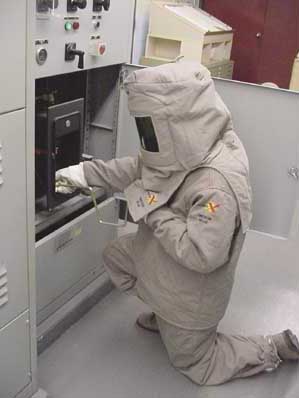
Photo 9. Wearing the protective equipment does not mean one would not be injured as a result of a blast or arc flash event, it only improves the chances that one might receive burns or injuries that are curable
This article is not intended to change the way people are currently doing business, whether involved in installation or inspection, it is intended to get them thinking about it and asking the right questions. Then, based on the answers to those questions, they would realize adjustments might be in order in the interest of electrical safety in the inspector’s workplace. Many will roll the dice every day and not change until an accident or a death occurs. Then the familiar comments will be muttered…should have, could have, would have, etc. It is far better to be proactive in these cases than to be reactive.
While the NEC is primarily an electrical installation code, it contains many provisions directly related to safety for the qualified person. Working space requirements, guarding of live parts, and series rated systems cautionary labels are just a few of the other requirements directly related to safety. The Code emphasizes qualified persons in many of its rules. Qualified persons should know about electrical safety and how to achieve it. It seems as though more and more emphasis is being placed on these provisions and the safety provisions in NFPA 70E and with just reason.
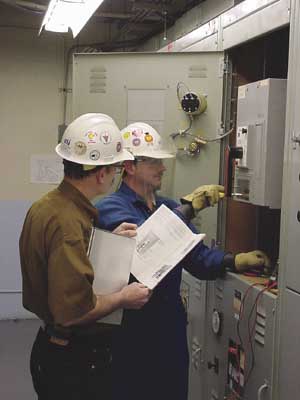
Photo 10
It is rather interesting and almost humorous that many in the electrical business who are bickering and arguing these days over the requirement for arc-fault circuit-interrupter protection, as required by 210.12 of the Code, have given little thought to the impact of 110.16 flash protection requirements. AFCI protection will evolve and will take care of itself in time just as GFCI protection did in the late 1960s and early 1970s, and buildings will be safer because of it. The electrical industry, including both installers and inspectors, has much to be concerned with relative to the impact of the new requirements in 110.16. These new provisions to the NEC need to be clearly understood, and it needs to be emphasized that these requirements are not just for electrical workers, they apply to electrical inspectors and others as well.
Assess Your Safety Habits
Here are a few questions to ask yourself to assess the electrical safety of your workplace.
- Do I work on electrical equipment while it is energized?
- If yes to the above, do I wear the proper protective equipment while performing that task?
- Do I understand how to determine which level of personal protective equipment to wear?
- o I remove panelboard covers when the panelboard is energized?
- If yes to the above, do I wear protective equipment while performing that task?
- Do I understand the difference between a curable burn and a burn that is not curable?
- Does my employer know that I work on equipment while it is energized?
- Does my employer understand the OSHA regulations relative to working on equipment while energized?
- Do I understand the revised definition to the term “”qualified person”” in Article 100?
- Am I considered a qualified person, and what are the limits of my qualifications?
If the answers to all or most of these questions are no, then it is a good indication additional training and education in these areas are needed. Several organizations provide information and safety training in these areas.
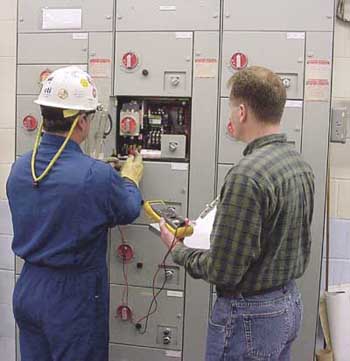
Photo 11
Do these situations in the photographs look familiar to you? If so, it might be time to evaluate your current work practices. Working on energized electrical equipment increases the risk of personal injury for any workman.
Electrical safety requires constant care and diligence. Executive Director Carpenter emphasized at each of the IAEI Section meetings in 2002 that one of the primary purposes of the IAEI is electrical safety. IAEI is involved with many relative aspects of the electrical field, but generally the foundation is built around electrical safety for persons and property. Being involved in codes and standards development process is just one of the many ways the IAEI demonstrates its commitment to electrical industry and consumer safety. Expanding and more frequent educational forums and materials are other areas where IAEI continues to work at meeting these objectives. Electrical safety involves education and training, as well as individual and organizational awareness of the hazards and protective measures needed to avoid the risks. One of the most important things to remember relative to electrical safety is that safety is as much an individual responsibility as it is an organizational responsibility. Try to spend a little extra time thinking about the importance of respecting the power and danger of electricity. It is a responsibility we all share. Be safe out there. If you’re not sure, it never hurts to ask in this business.
1 Article 100–Definitions, NFPA 70,National Electrical Code, 2002 Edition (National Fire Protection Association, Quincy, MA), page 70 -37.










Find Us on Socials